
This unique wildlife experience takes you across the Southern Terai region of Nepal. Starting from Chitwan National Park, for a special elephant encounter and safaris to see the endangered one-horned rhinoceros, you’ll move west to explore the remote Bardia National Park in search of the elusive Bengal Tiger. Along the way, you’ll stop in spiritual Lumbini, the birthplace of the Buddha.
Highlights
- Get an almost guaranteed sighting of incredible one-horned rhinoceros.
- Stay near elephants at Chitwan’s Elephant Camp.
- Look for tigers at the quiet Bardia National Park.
- Experience the spiritual atmosphere of Buddha’s birthplace, Lumbini.
Want to know more?
| Viber / WhatsApp | 9864014537 |
| Kathmandu office | 01-4439962, 01-4439963 |
| Price |
Trip Itinerary Brief
| Day | Highlights | Overnight |
| Day 1 | Welcome to Kathmandu! | Kathmandu |
| Day 2 | Fly from Kathmandu to Chitwan | Chitwan National Park |
| Day 3 | Explore Chitwan: A Day With Elephants | Chitwan National Park |
| Day 4 | Explore Chitwan: Safari by Jeep or on foot | Chitwan National Park |
| Day 5 | Drive from Chitwan to Lumbini | Lumbini |
| Day 6 | Drive from Lumbini to Bardia National Park | Bardiya National Park |
| Day 7 | Explore Bardia: Jungle & River Safari | Bardiya National Park |
| Day 8 | Explore Bardia: In Search of the Royal Bengal Tiger | Bardiya National Park |
| Day 9 | Fly from Bardia to Kathmandu | Kathmandu |
| Day 10 | Depart Kathmandu |
Detailed Itinerary
Day 1: Welcome to Kathmandu!

When you fly into Kathmandu, you’ll be able to see the valley, the Himalayas, and the terraced fields below. After clearing customs, a representative will meet you outside the airport and assist you in navigating the narrow, winding streets of Kathmandu to your hotel.
After you’ve settled in, go exploring in the city. Kathmandu Durbar Square is a good place to start your exploration, as it leads you through narrow alleyways teeming with small shops, ancient temples, and local restaurants. Swayambhunath, the white stupa rising above the valley, is a great place to stretch your legs and watch the sunset over the valley.
In the evening, the tourist district of Thamel is a good place to get your first meal, with a variety of restaurants serving both Western and Nepali cuisine.
Day 2: Fly from Kathmandu to Chitwan
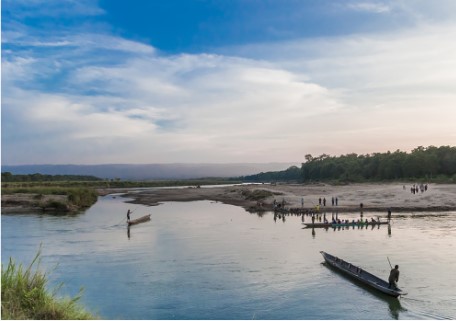
You’ll wake up early this morning to catch a flight to Nepal’s famous Terai region, Chitwan National Park. The landscape and culture are vastly different from Kathmandu or the Himalayas. The name ‘Terai’ refers to the extensive plains in southern Nepal; this area is the most northern extension of India’s great Gangetic plains, land that was won and lost over decades of struggle, and it shares both Indian and Nepali characteristics and culture.
When you arrive at Chitwan’s airport, you will be met by a representative from your lodge and driven to the lodge in time for lunch (unless you choose an afternoon flight) and a briefing on the activities available in the time you have left this afternoon and what’s on tomorrow.
Day 3: Explore Chitwan: A Day With Elephants

This morning, get up early and follow the elephants into the grasslands beside the river, where the mahouts cut and collect grass for the elephants to eat during the day. Enjoy a steaming cup of traditional Nepali tea while admiring the beautiful sight of elephants grazing in the morning mist. You can even try your hand at cutting and binding the grass yourself—more difficult than the mahouts make it appear!
After breakfast, return to the Elephant Camp, where you will spend the night. Spend the rest of the morning learning how to care for elephants from the mahouts. Lunch will be ready around noon, and you may want to relax and nap (like the elephants) during the hot midday hours.
Go for a walk in the jungle with the elephants and their mahouts in the late afternoon, when the temperature is pleasant. You’ll be walking alongside the elephants, watching how they move, what they eat, and listening to their rumbling and trumpeting communication. As you travel through the jungle, grassland, and wetlands with the elephants, the naturalist will explain everything you want to know about the surrounding ecosystem. Depending on the route you take, you will most likely come across tiger tracks, deer, various bird species, and possibly a rhino or two.
As an overnight guest at the Elephant Camp, you will be surrounded by elephants who live in a large, chain-free enclosure. You’ll be immersed in the elephants’ daily lives all day, and even after dark, you’ll sense their presence through their verbal and infrasonic communications.
Day 4: Explore Chitwan: Safari by Jeep or on Foot

Today is going to be a memorable day because it’s a full day of safari activities in the Chitwan National Park, and you’re going to see some incredible wildlife. All wildlife activities are accompanied by an experienced naturalist who will tell you everything you need to know about the park’s flora and fauna.
The greater one-horned rhinoceros spotted deer, hog deer, sambar deer, barking deer, gharial crocodiles, and a wide variety of birdlife can all be seen. You might even see a leopard, sloth bear, or Royal Bengal tiger if you’re lucky.
Day 5: Travel from Chitwan to Lumbini by road
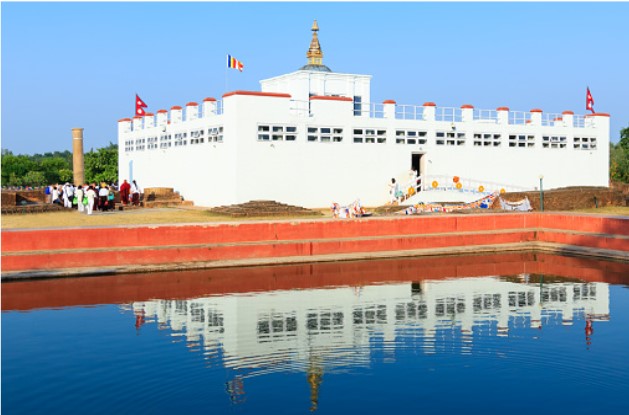
After breakfast in Chitwan, you will drive 3-4 hours to Lumbini. Lumbini is a Buddhist pilgrimage site in Nepal’s Kapilavastu district, near the Indian border, where Queen Mayadevi is said to have given birth to the Buddha, Siddhartha Gautama. Between 563 and 483 BCE, the Buddha lived.
Lumbini is one of four pilgrimage hotspots that sprang up in pivotal locations in the Buddha’s life, the others being Bodhgaya, Sarnath, and Kushinagar. Lumbini has been a UNESCO World Heritage Site since 1997. Lumbini’s holy site includes ruins of ancient monasteries, a sacred Bodhi tree, an ancient bathing pond, the Asokan pillar, and the Mayadevi temple, which is where Buddha was born precisely. Pilgrims from various countries chant and meditate at the site from early morning to early evening.
Lumbini also has the Crane Sanctuary, which is rich in culture and birdlife. Take binoculars if you want to see the Eurasian Wigeons, Eurasian Marsh Harriers, and Booted Eagles.
Day 6: Drive from Lumbini to Bardiya National Park
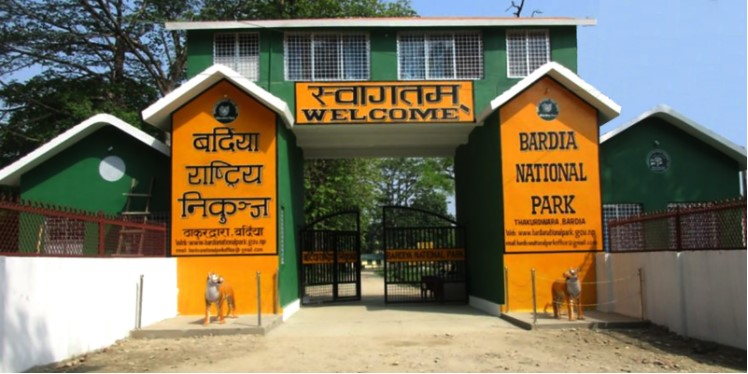
Today you drive through Tharu villages and border towns in Nepal’s southern flood plains. The journey takes about 7-8 hours. Along the way, you’ll get a sense of life in the Terai as you pass through towns, fields, and forests.
You’ll cross the Babai River close to the Karnali Lodge, where Marsh Mugger Crocodiles may be basking in the midday sun. When you arrive at Karnali Lodge, the staff will greet you with a refreshing welcome drink. Settle into your room and read a book, or go for a walk around the compound before dinner. The evening will begin with cocktails around an outdoor fireplace, followed by dinner in the Ghol Ghar (Nepali dining room). The stocked bar remains open until the last person goes to bed, making it ideal for late-night chats.
Day 7: Explore Bardiya: Jungle & River Safari
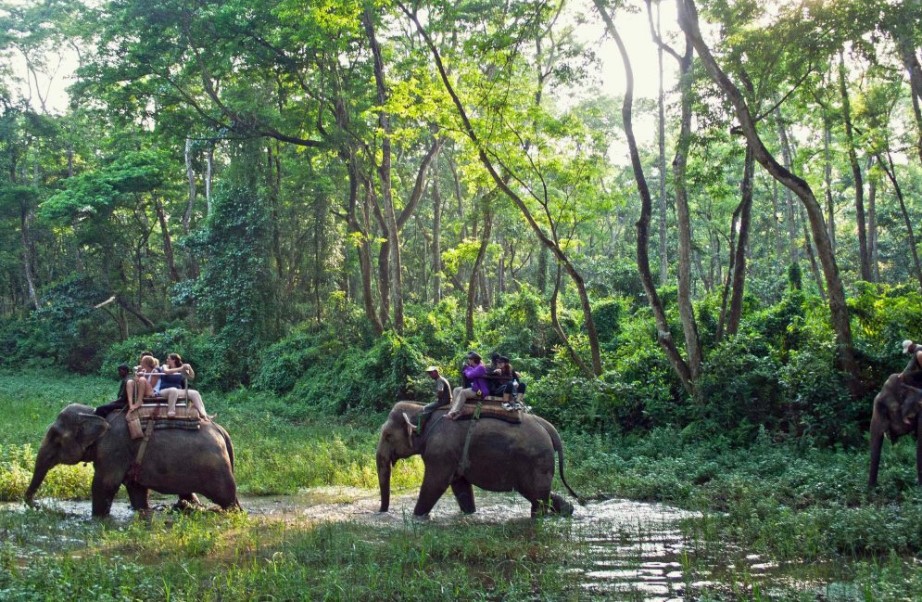
Today you can relax or choose from a variety of activities to explore the Bardiya jungle.
Wildlife Safari by Elephant or Jeep
Explore the jungle on an elephant ride or a jeep safari, best done early in the morning when the mist rises over the river and grasslands and the wildlife comes to drink. Birds and monkeys chatter in the trees. If you’re lucky, you might spot a Royal Bengal Tiger. After lunch, you can go on a jungle walk to see more wild animals and take some great photos.
The Chisapani Bridge and the Karnali River Safari
Begin your river safari with a one-hour drive to the Chisapani Bridge, Nepal’s largest. You’ll float down the Karnali River, spotting an abundance of aquatic birdlife, crocodiles, and, if you’re lucky, the extremely rare Gangetic dolphin. Drift slowly past small islands as the river splits, watching deer and monkeys forage on the river bank. Following your safari, you will be picked up and driven to the lodge for a late lunch.
Investigate the Local Villages.
In the afternoon, take a stroll through neighboring villages and paddy fields, meeting local farmers and learning about the Tharu way of life.
Day 8: Explore Bardiya: In Search of the Royal Bengal Tiger
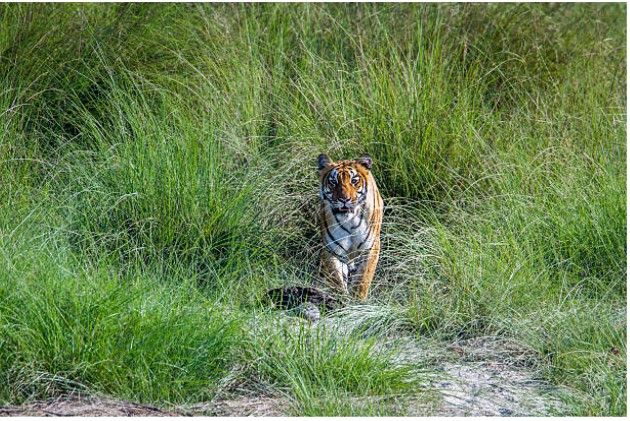
Early in the morning, listen to the sounds of the abundant birdlife. Get an early start before embarking on a full-day jungle jeep safari in search of tigers. An experienced naturalist will lead you to various hides, lookouts, and areas with breathtaking views, all while introducing you to the diverse wildlife found in Bardiya National Park. While you wait for a glimpse of the elusive orange and black stripes, eat a packed lunch.
Return to the National Park Headquarters via the elephant and Gharial (the world’s rarest crocodile) breeding centers.
In the early evening, return to the lodge for a well-earned cold beer or hot shower, followed by a delicious dinner.
Day 9: Fly from Bardiya to Kathmandu

After a leisurely breakfast, you will return to Nepalgunj (2 hours) for your return trip to Kathmandu. There will be some free time in the afternoon to visit other points of interest in the capital or do some last-minute shopping.
Day 10: Depart Kathmandu
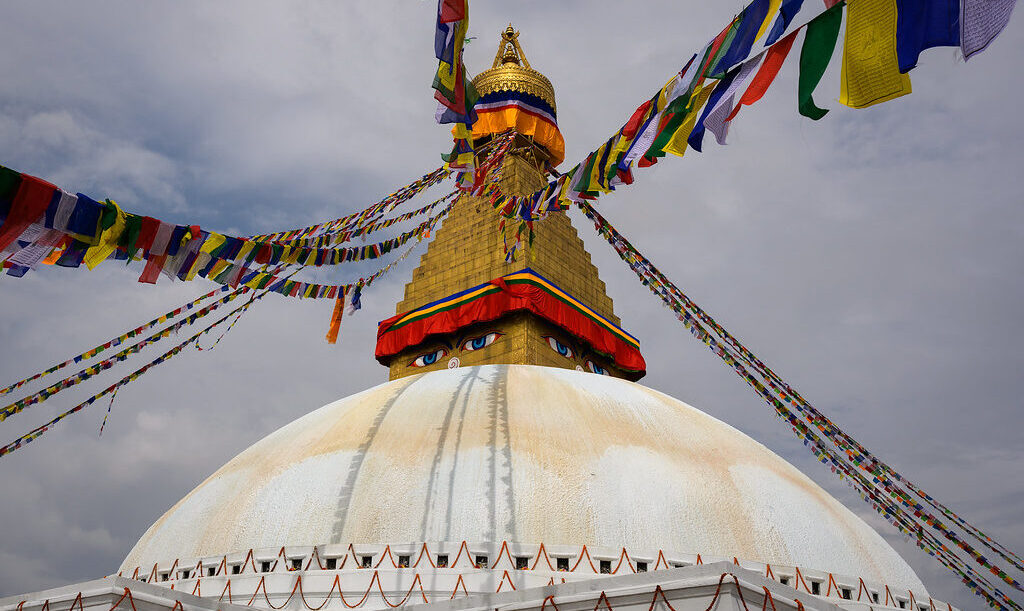
It’s time to say goodbye to Nepal. Enjoy your final moments in Kathmandu by having breakfast in a café, taking a final stroll through the narrow alleys and temples, and shopping for souvenirs. A driver will meet you at your hotel and transport you to the airport for your return flight home. It’s best to arrive at the airport at least two hours before your flight.
Best season to Go
One of the best times to visit Southern Nepal is in the fall or autumn. Climbers and hikers enjoy this season because it is generally dry and the skies are clear beginning in October. Daytime temperatures at high altitudes are pleasant for walking, whereas lower down it is hotter.
Map

